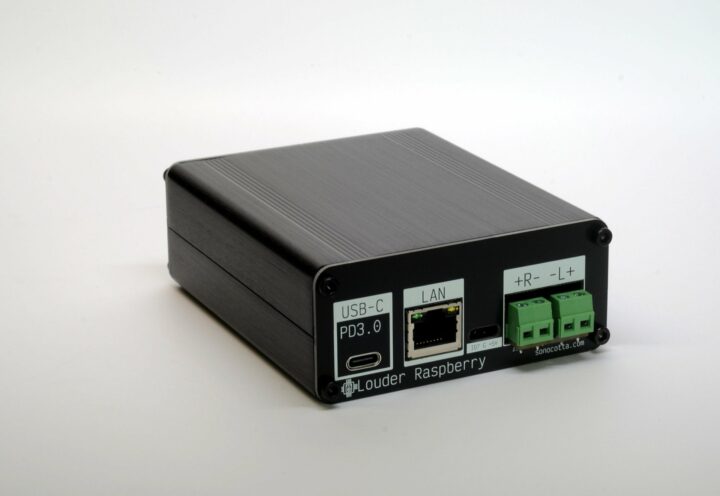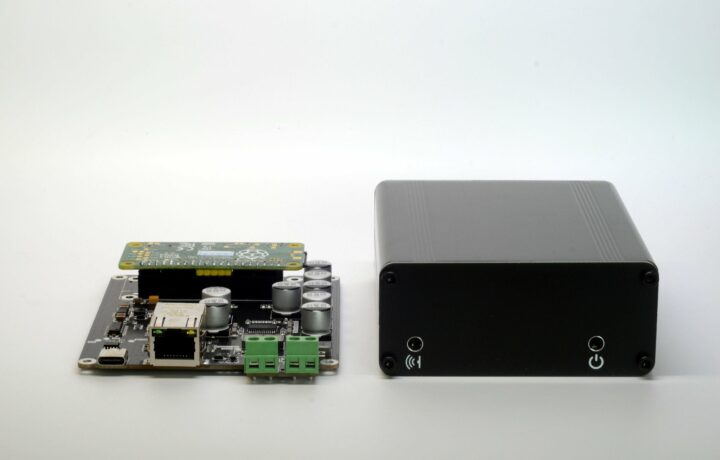Louder Raspberry Pi is an open-source home media center based on a combination of the Raspberry Pi Zero W or Zero 2 W and the Texas Instruments TAS5805M DAC. It is an audio entertainment platform created by Andriy Malyshenko of Sonocotta, a Polish electronics hobbyist and maker.
Louder Raspberry Pi incorporates the computing power of the Raspberry Pi Zero and the Hi-Fi audio processing capabilities of TI’s TAS5805M DAC in a compact, aluminum case. The device delivers up to 25W per channel stereo output and is powered via a 65W+ USB-C PD3.0 adapter. It is “aimed to be paired with medium-to-large speaker systems” and supports both Wi-Fi and Ethernet.
The Raspberry Pi board was selected over other lightweight alternatives due to the ease of development it offers. The Raspberry Pi Zero board is small enough to make for an overall compact device and powerful enough to handle the demands of a home media center.
Louder Raspberry Pi specifications:
- SBC – Raspberry Pi Zero W or Raspberry Pi Zero 2W (Broadcom BCM2835 SoC single-core, 32-bit ARM11 @ 1GHz or Broadcom BCM2710A1 SoC quad-core ARM Cortex-A53 @ 1 GHz)
- DAC – Texas Instruments TAS5805M with built-in D-Class amp
- Ethernet – Wiznet W5500 SPI Ethernet
- USB – 1x USB-C PD3.0 for power delivery and serial port
- Audio Output – 2x 22W at 20V input over USB-PD
- Misc – 1x IR reader, 2-pin speaker terminal
- Power – 65W+ USB-C power adapter
- Dimensions – 88 x 38 x 100mm
Louder Raspberry Pi is part of a line of Raspberry Pi-based media center devices from Sonocotta, a series that also includes Loud Raspberry Pi (work-in-progress) and Hi-Fi Raspberry Pi. You can set up your audio server using Volumio, Mopidy, or your favorite music player software. However, your operating system will need to be configured to work with the TAS5805M DAC. Instructions and associated code are available in a GitHub repository.
The device is priced at $35 for the base board and DAC on Tindie. The Raspberry Pi Zero W version costs $55 while the Zero 2 W version can be bought for $60. Adding a Lenovo 32GB Class 10 SD card incurs a $10 additional cost. If you want to build your own Louder Raspberry Pi, board schematics, PCB designs, and detailed information about the device are available in the Sonocotta media center repository.

Tomisin is a writer specializing in hardware product reviews, comparisons, and explainers. He is very passionate about small form factor and single-board computers.
Support CNX Software! Donate via cryptocurrencies, become a Patron on Patreon, or purchase goods on Amazon or Aliexpress






